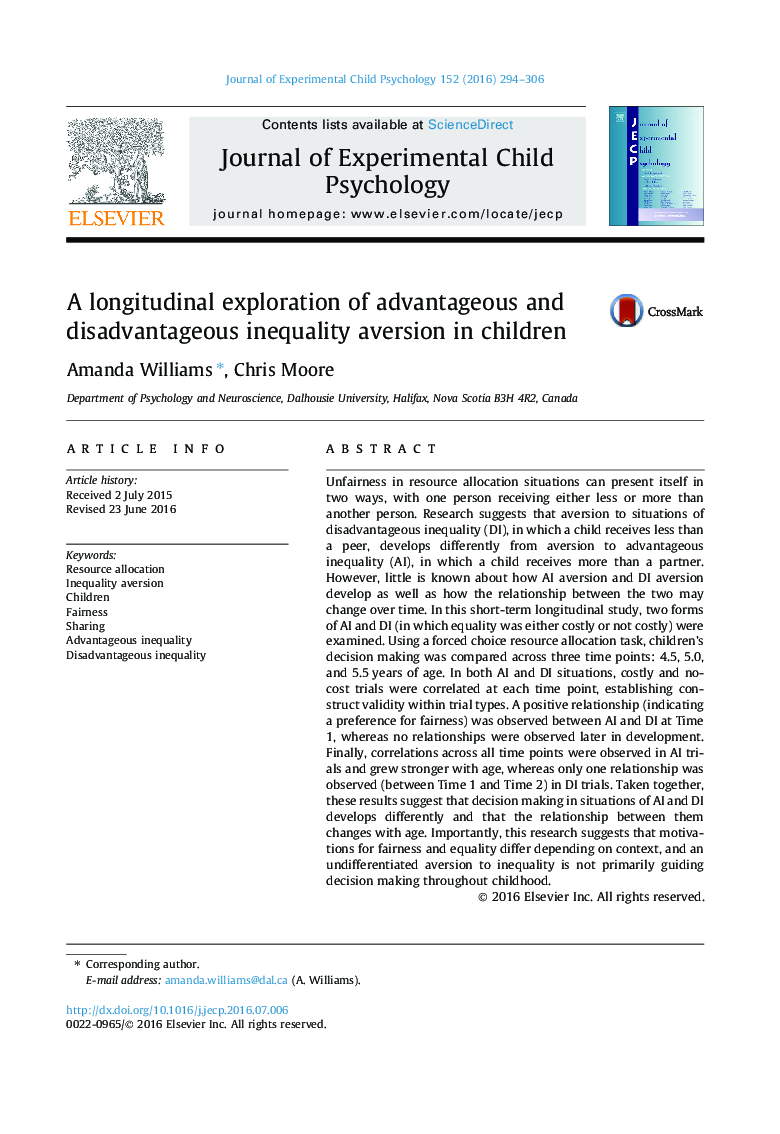| Article ID | Journal | Published Year | Pages | File Type |
|---|---|---|---|---|
| 7274388 | Journal of Experimental Child Psychology | 2016 | 13 Pages |
Abstract
Unfairness in resource allocation situations can present itself in two ways, with one person receiving either less or more than another person. Research suggests that aversion to situations of disadvantageous inequality (DI), in which a child receives less than a peer, develops differently from aversion to advantageous inequality (AI), in which a child receives more than a partner. However, little is known about how AI aversion and DI aversion develop as well as how the relationship between the two may change over time. In this short-term longitudinal study, two forms of AI and DI (in which equality was either costly or not costly) were examined. Using a forced choice resource allocation task, children's decision making was compared across three time points: 4.5, 5.0, and 5.5Â years of age. In both AI and DI situations, costly and no-cost trials were correlated at each time point, establishing construct validity within trial types. A positive relationship (indicating a preference for fairness) was observed between AI and DI at Time 1, whereas no relationships were observed later in development. Finally, correlations across all time points were observed in AI trials and grew stronger with age, whereas only one relationship was observed (between Time 1 and Time 2) in DI trials. Taken together, these results suggest that decision making in situations of AI and DI develops differently and that the relationship between them changes with age. Importantly, this research suggests that motivations for fairness and equality differ depending on context, and an undifferentiated aversion to inequality is not primarily guiding decision making throughout childhood.
Related Topics
Social Sciences and Humanities
Psychology
Developmental and Educational Psychology
Authors
Amanda Williams, Chris Moore,
